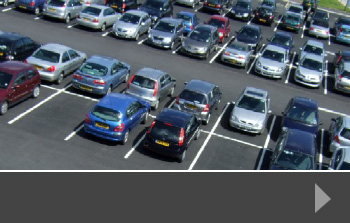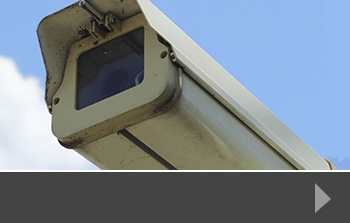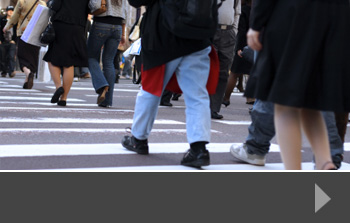Understanding more about how traffic uses our road system and how we can plan transport to reduce congestion could help towns and cities across the UK to lower the amount of pollution. Traffic surveys are a key way to take stock of current traffic volumes and journeys, and the data they produce can influence planning and infrastructure decisions.
Why is air pollution important?
Earlier this month, the European Commission issued a warning to the UK government about the levels of nitrogen dioxide in the air in cities including London, Leeds, Southampton and Glasgow – showing that the problem stretches the length of the country. The Commission says that poor air quality contributes to the early death of up to 400,000 people in the UK every year, and that the government is failing to deal with the problem adequately. And we’re not the only ones – the Commission has also sent similar warnings to the governments of Germany, France and Spain.
How can traffic surveys help?
Air pollution is caused by a number of things, and it is generally accepted that, in our cities, traffic has one of the biggest influences on air quality. Reducing the number of vehicles within a city, using electric vehicles rather than diesel-powered ones and encouraging people to walk, cycle or use public transport are all strategies used by local authorities to help reduce both pollution and general congestion, and it’s here that surveys can play a vital role, allowing you to see:
- Traffic counts at peak and off-peak times
- Numbers and types of vehicles using any given road
- Journey times on specific routes in and out of the centre of a town or city
- Traffic flow around specific junctions, motorway intersections or developments
- Parking issues in and around key areas such as public transport stations, business parks, shopping centres and residential developments
Designed to collect data in the best form for the research taking place, traffic surveys produce valuable information for decision-makers. As strict controls on air pollution are enforced, and governments and local authorities are put under more pressure to improve conditions, data on these issues will become increasingly valuable.
Traffic surveys from RDS
At Road Data Services we specialist in a range of surveys for planning authorities, local and national government agencies and private developers. Our surveys are tailored to each individual project and carried out using the latest technology to ensure accuracy. To find out more about how we can help you understand traffic and pedestrian movement in your area, contact us today.
In the recent Autumn Statement, Chancellor Philip Hammond announced further investment into the transport infrastructure across England. This investment is designed to reduce congestion, improve journey times and boost economic benefits to cities around the country. A variety of traffic surveys, journey time investigations and other data collection is likely to be required in order to identify exactly where the investment is needed, and what sort of plans are required.
Key pinch points targeted
Overall, the government is planning to invest an additional £1.1bn into roads and local transport, upgrading in key places and focusing on those areas where severe congestion occurs. In the detail of the Autumn Statement, this expenditure is allocated as follows:
- £220m to ease congestion ‘at critical points on the strategic road network’. No specific plans have yet been announced.
- £390m investment in future technologies, including electric vehicle charging points, support for low emission public transport vehicles, money for the development of alternative fuel options for aviation and HGVs, and additional investment in the research and testing of driverless car technology.
- £100m towards flood prevention and resilience, particularly focused on those road systems which have suffered from flood damage in recent years.
- £27m of development funding for the Oxford-Cambridge expressway, via Milton Keynes, opening a growth corridor from east to west.
Road and traffic survey results
In addition, the government is looking at five key road systems, following studies carried out by the Department for Transport. As part of the 2020-2025 Roads Investment Strategy, road improvements will be carried out on the A66 and the M60 North West quadrant, with further investigation underway into the case for improvements to the A1 in the East of England, and better connections between Sheffield and Manchester.
Traffic survey support from RDS
At Road Data Services, we work with local authorities, government departments, developers and contractors to assess current road usage and provide key data to help parties make the best possible decisions. From motorway journey time surveys through to parking data and automated traffic counts, we can help deliver key data to a wide range of private and public projects. To find out more, contact us today.
Usually, a traffic survey, pedestrian, journey or speed survey is part of a wider project – either a development or a consideration of changes to the road system, or an investigation into a specific problem. From motorways to school parking; new supermarkets to much-needed housing developments, the traffic survey plays an important part in decision making.
Commissioning a survey
Transport planners, developers and local planning authorities are just some of the bodies who need good quality data in order to make the best decisions. It is likely that they will commission a range of surveys – particularly for a large or complex development – of which traffic is just one. However, as parking, congestion and safety are often some of the biggest concerns at the planning and local consultation stage, it’s important to gather as much relevant and timely information as possible.
So the first step is to talk to an experienced survey firm, which has the right technology to conduct the type of survey you need, which can help you to design and set the parameters for your survey and which can provide the data in the format you need. The survey might take place in a single instance, or may extend over several key periods in order to provide the range of data you need.
Using a traffic survey
The results from your survey will help to influence what happens next, and allow you to produce data that supports your decision process. This might include revising your plans to add pedestrian crossings, design traffic calming measures, change the way traffic is managed for access to your development, or to demonstrate that your changes will positively influence traffic and pedestrian safety.
You might also want to commission compatible surveys – so a pedestrian survey or journey time survey which, when combined with a traffic survey give you a much fuller picture; or it may be useful to undertake a traffic survey once your development is finished, or highway changes have been put into place, to allow you to gather real-time data on the impact of your plans.
Traffic surveys from RDS
At Road Data Services we work with a wide range of parties across all sorts of planning and development projects to ensure decisions can be made with the benefit of good quality, reliable data. To find out more about how we can help with your traffic surveys, contact us today.
A recent report by the Parliamentary Advisory Council for Transport Safety (PACTS) shows that whilst the UK enjoys an excellent record for low vehicle occupant fatalities compared with other countries, pedestrian safety could certainly be improved.
The report, which puts the UK’s roads amongst the safest in the world, ranked alongside Sweden, Netherlands, Norway and Switzerland, suggests that the poor record for pedestrian safety could be related to the safety ratings of new cars. It says that new cars in the UK have, on average, lower safety ratings than those sold in the other top rated countries. This includes those cars which have low pedestrian safety ratings, placing the UK 19th out of the 28 European Union countries in terms of pedestrian protection.
Pedestrians and other vulnerable road users
The UK’s record is also poor for what PACT terms ‘vulnerable road users’. This includes motorcyclists and cyclists in addition to pedestrians, with deaths in all three groups higher than in many other European countries. The UK also had a higher proportion of fatalities on roads where the speed limit is higher than 60mph, and on motorways.
An executive director of PACT, David Davies, said: “Are there areas where comparatively speaking, Britain could do better and where investment and effort might be best concentrated? The Government needs to promote cars that are low on emissions and high on safety, including pedestrian protection. PACTS urges the public and private sectors to buy only the safest vehicles – those with a 5* safety rating.”
Safety first – pedestrian surveys from RDS
At Road Data Services, we offer a range of bespoke survey options which allow traffic planners, road safety specialists and developers to ensure greater pedestrian safety. From the siting of pedestrian crossings, to speed management measures, our data can show you where you may face critical safety issues. We work with groups concerned about particular pedestrian flash points, such as outside schools, shops and hospitals, as well as with developers planning new housing, retail and business sites.
To find out more about how our pedestrian surveys can help to positively influence your decision making, contact our office today.
A recent analysis of government traffic survey detail has shown the places across the UK where it is statistically most dangerous to drive. The figures, which were reported in ChronicleLive, an online newspaper for the North East, show that Newcastle is third only to the London borough of Hackney, and Tameside in the North West in terms of accidents between midnight and 4am.
Using statistics to influence travel planning
Whilst the percentage of accidents reported in this four-hour period is small in comparison to the overall accident statistics for each area, it’s clear that some places suffer more than others. Nearly 7% of road accidents – 53 incidents – recorded by the Newcastle police force in 2015 occurred post-midnight, compared with a national average of less than 4%. Causes of accidents vary, but it is likely that drink drivers cause accidents at night time more often than during the day, and that quieter roads often encourage speeding and reduced awareness, which can result in accidents, including fatalities.
Understanding how many and what type of accidents happen at certain times of the day and night can help to influence traffic planning. Any stretches of road identified as particularly dangerous can be modified using traffic control measures, such as speed limit reduction and chicane-style road improvements, or monitored using traffic cameras.
Traffic surveys for development planning
It’s also worth looking at traffic survey statistics for night-time accidents when planning a new development. If an area has a higher incident of accidents at night, planners and road safety experts may want to investigate the reasons before siting a housing development or school in that area. The greater the understanding of the way the roads are used by traffic and pedestrians in a certain area, the better the resulting development is likely to be.
Traffic, pedestrian and journey time surveys from RDS
At Road Data Services, we support planners, developers, agencies and other interested groups with accurate data generated by our bespoke surveys. We work closely with you to identify the best times to conduct the survey, and to ensure data is provided in the right format for your needs. Our work is used to influence and inform a wide range of road, traffic, parking and development issues across the UK.
To find out more, or to talk to us about providing reliable data for your next project, please contact us today.
The government has recently announced a consultation on various issues which may be affected by the introduction of driverless cars in the next three to five years. As driverless technology becomes more widely available, the government is aware that it will need to be prepared both practically and legally for any changes that might happen. In addition to formal consultations, there may be a need for traffic surveys to look at current road use and journey safety.
Updating the Highway Code
The introduction of certain driverless technologies will require a revision of the current Highway Code, to ensure that a range of manoeuvres – from motorway lane-changing to reverse parking – take into account the way that these new cars may operate. It may also need to include guidance on the driver taking over operation of the car: there should always be a qualified driver in the car who can take control at any stage of the journey.
In addition to the rules of the road, it is likely that the insurance industry will need to update its policies. How is responsibility allocated if an accident is caused by a driverless car? Insurers are already planning for the increase in driverless technologies, and watching carefully those countries where trials are taking place – particularly America where two fatal accidents involving driverless cars are likely to test current legislation.
And whilst the government is not considering repealing any existing road safety laws, there may be a case in the future for allowing drivers to, for example, use their phones in the car if the driverless technology has taken over.
Online consultation for drivers
The government has set up its consultation online so that anyone can log on and have their say. It wants to find out what road users of all kinds think about the introduction of driverless technology and how the UK can maintain a safe, reliable and free-flowing road system as far as possible.
Transport Secretary Patrick McLoughlin said: “Driverless car technology will revolutionise the way we travel and deliver better journeys. Britain is leading the way but I want everyone to have the chance to have a say on how we embrace and use these technologies. Our roads are already some of the safest in the world and increasingly advanced driver assist and driverless technologies have the potential to help cut the number of accidents further.”
Traffic surveys that enhance the consultation process
For traffic, pedestrian, parking and road use consultations of all kinds, talk to RDS about our range of surveys. From simple traffic surveys to automated traffic counts, journey time surveys and pedestrian surveys, we have the experience and skills to conduct professional, targeted investigations, delivering the data in your preferred format. Our data has been used to inform debate and influence outcomes.
To find out more, or to talk to us about your next project, please contact us today.
Lowering the speed limit is one of many traffic calming measures applied across the country. In many cases, speed limits are reduced from 30mph to 20mph, and this tends to be in particularly busy residential areas or around local amenities such as schools and shops, where there is more pedestrian traffic. However, in some cases, speed surveys show that most traffic exceeds this low limit, so is 20mph too slow?
Bristol speed survey highlights issues
An example of this has been raised in Bristol, where a number of new 20mph zones were introduced across the city during the course of 2015. Campaigners in the areas where the new limit has come into force say that most drivers are ignoring the limit, and the changes simply aren’t working. A recent study by the Bristol Post showed that nine out of 10 vehicles, including council vehicles, exceeded the speed limit, with an average speed of 28 mph.
The campaigners believe that rather than impose blanket speed limits, each area should be considered separately – whilst a 20mph limit might be right for some roads, others might benefit from other speed reduction methods such as changes to the road layout, and more traditional traffic calming measures.
When does a speed survey help?
It’s not just cars going too fast that can cause problems. Traffic that moves too slowly creates bottlenecks and traffic jams resulting in longer journey times and frayed tempers. Drivers may be tempted to overtake in dangerous places, or tailgate other drivers, making the road even more dangerous than it was under a higher speed limit. A speed survey will help to see what average speeds are being used in a particular area, and highlight where other measures may be a safer way to protect both road users, pedestrians and residents.
Speed surveys from RDS
At Road Data Services, we conduct a wide range of surveys from speed surveys to journey times and pedestrian safety. Each survey is tailored to your needs and we can present the data in any format you choose. Our surveys are used to help make important decisions about traffic management, road layout, the planning of new developments, pedestrian and cycle safety and much more. To find out how we can help with your project, please contact us today.
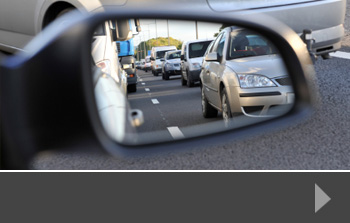
Traffic Surveys
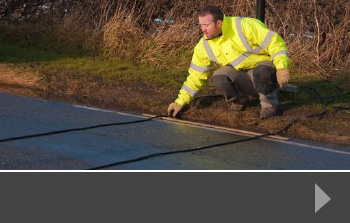
Automatic Traffic Counts
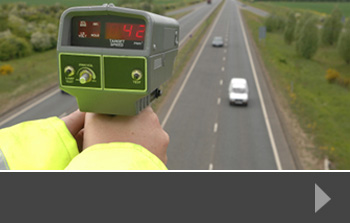
Speed Surveys
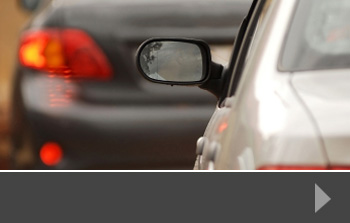
Queue Surveys
It’s one of the most emotive road safety issues of our time: how to keep children and other road users safe at school drop-off and pick-up times, when traffic is busy, and drivers often distracted. The AA Populous Motoring Panel traffic survey for April 2016 found that 57% of those surveyed who had school-age children said that there is often traffic chaos near the school their children attended.
There are a number of ways that surveys could help to ease traffic problems at these vulnerable locations. Both traffic and parking surveys can be used to collect and analyse data on the quantity of traffic using the roads at key times – and compare them with the volume at off-peak periods. And because parking is often one of the reasons why traffic gets so quickly snarled up around these times, it makes sense to look at parking options, including providing dedicated parking, offering rolling drop-off times so that children aren’t all coming to school at the same time, and imposing parking restrictions around the immediate vicinity of the school, so that roads and junctions are kept clear.
These types of traffic volume study and parking analysis can be used to inform changes to the road system, and to demonstrate the impact of further developments in and around the school area, including increasing the pupil intake at the school, and building new housing developments nearby. Local planners may also choose to put in traffic calming measures such as priority lanes, speed bumps and lower speed limits, to encourage safer and slower driving. In addition, for those schools with a wider catchment area, traffic surveys can help to boost plans for additional bus services, helping to reduce the number of cars travelling to school at any one time. Match this with car-share schemes, encouragement to walk or cycle to school rather than travel by car, and even diverting non-school traffic from nearby roads at key times, and it’s easy to see how good quality data can help to influence positive road safety changes.
Bespoke traffic surveys from RDS
At Road Data Services, we specialise in collecting a wide range of traffic survey data, parking, pedestrian and journey time data, using a range of reliable methods. These result in good quality data that can be reported in the way that’s best for your project, helping you to make a strong case for a change in the existing road system, plans to develop or create new road systems, or just to show that the current system is actually the best one for the circumstances. To find out more about how we can help, just contact us today.
A recently published report from the Department of Criminology at the University of Leicester has found that almost half of drivers convicted of hit-and-run offences say they would not have left the scene of the incident if they had known it was against the law to do so. The department chose to conduct an interview survey on the reasons why motorists hit and run.
Why choose this group to interview?
Public help is often crucial to identifying hit-and-run drivers, and with a significant proportion of collisions involving car accidents and pedestrians, it’s important to know more about why drivers choose to leave the scene. The research, which interviewed 695 people, discovered the following key responses:
• 50% did not think the accident was serious enough to report or they did not think that they had to report the accident (of this, 29% did not think it was serious enough and 21% were unaware of their responsibility to report an accident)
• 45% of those convicted would have stopped and reported the incident if they had known that they had committed an offence by leaving the scene of the accident
• 16 to 34 year olds were more likely to leave the scene of an accident because they were not insured, they had been drinking, were scared of the consequences or they ‘panicked’
• Older drivers (over 34 years old) were more likely to leave the scene if they did not think the accident was serious enough to report
• 6% of younger drivers (aged 16 -34) said that nothing would have made them stop and report the accident – they were determined to get away with the offence
The research found that over 50% of respondents were traced through pedestrian or driver witnesses.
When planning travel and public transport developments, all sorts of safety and traffic flow considerations are part of the process. However, it’s impossible to plan for incidents like hit-and-run offences, although these may be more likely to occur if there is poor provision for pedestrian and bike safety, for example, leading to people being forced to use the roads in an unsafe manner.
Commenting on the interim findings, Senior Lecturer Dr Matt Hopkins said: “As relatively little previous work in relation to ‘hit and run’ accidents has included any personal engagement with offenders, this research is fairly novel.
“Of course, these findings have to be treated with caution, but they do begin to highlight some of the reasons why drivers leave the scene of an accident. For a number of drivers there is clearly confusion about the legal requirement to report an accident, but importantly, some differences are observed between younger and older drivers that could be developed into preventative strategies. Further work is required to gain more detailed understanding of driver motivations to leave the scene from across a range of accident types. This is where the next stage of the research will focus.”
Interview surveys from RDS
At Road Data Services we conduct a wide range of surveys, including face-to-face interview surveys. These can help to compile a clear picture around a particular topic, giving personal and anecdotal data that can be used alongside more traditional data gathered in traffic surveys, speed surveys and parking surveys to ensure new developments are planned with traffic and pedestrian safety in mind.
To find out more about how we can help with your project, please contact us today.
A range of recently approved road and vehicle technology projects could help to improve road traffic conditions in years to come, and influence the way that traffic and parking surveys are undertaken.
Everyone is aware of Google’s driverless car programme, and a range of road car manufacturers are also researching and implementing technologies into their vehicles that remove some operations from the driver, in a series of steps that could lead to completely driverless travel in the future. These systems are designed to make travel safer, resulting in greater road traffic control.
The most recent projects to be supported by the government include technologies for both road and rail systems. For example, around 40 miles of existing roads in Coventry are to be equipped with systems that will aid so-called ‘autonomous’ vehicles. These talking technologies will be able to alert drivers of accidents ahead and receive details of hazards in the area.
Other projects to receive government backing include ways to reduce the cost of testing driverless technologies, surveys that improve manufacturers’ understanding of what drivers are really looking for from the technologies, and technology that monitors vehicle data to predict safety risks.
The congested nature of today’s traffic and road conditions link with a desire to make driving easier and safer so that, rather than adding more road traffic calming measures to our streets, the vehicles themselves become part of the solution, not part of the problem.
And how will this impact traffic survey work? It’s possible that driverless cars may be able to continuously send data back to the manufacturer or to a nominated survey source so that accurate and real-time travel data can be collected. This, merged with survey data taken in more traditional ways will help road planners, developers, manufacturers and safety campaigners see exactly what impact the new technology has on congestion, journey times and general road safety.
Traffic surveys from RDS
At Road Data Services, we specialise in a range of surveys using the latest technologies. Our knowledge, understanding and analysis allows planning departments, transport consultants and developers of all types see exactly what impact new developments or changes to road systems will have on the travelling public, and to implement systems and changes that ease congestion and improve safety.
To find out more about our work, or to talk to us about your next project, please contact us today.
Our Surveys
We carry out all manner of surveys; to find out more about our individual services contact us for a no-obligation quote today or please click on the images below.
With the ability to work across the UK, we offer:




Recent News
News
Will new housebuilding plans have knock-on effect on traffic congestion?UK Traffic Inches Up in 2024 – Data Underscores Growing Demand for Robust Survey InsightsWill new housebuilding plans have knock-on effect on traffic congestion?
New national data show that traffic volumes on Britain’s roads increased in 2024, reaffirming the …
News
Will new housebuilding plans have knock-on effect on traffic congestion?
On July 25th, Levelling Up Secretary, Michael Gove, announced an update to the …

